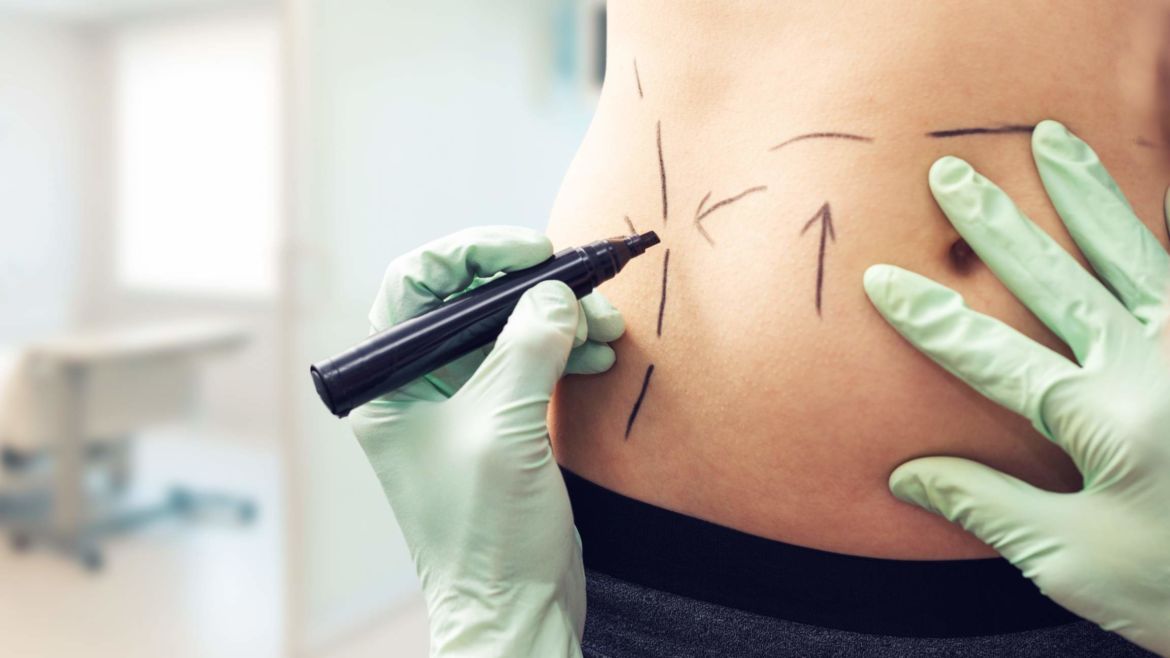PROCEDURE DURATION: 1 hour to 2 hours
TYPE OF ANESTHESIA: Local anaesthesia with sedation or general anaesthesia
WHAT IS LIPOSUCTION?
 The Liposuction is one of the most requested cosmetic surgery.
The Liposuction is one of the most requested cosmetic surgery.
This method allows the removal of excess adipose tissue localized in certain areas of the body (submental region, arms, back, abdomen, lateral region of the abdomen, lateral and medial region of the thighs, knees medial region) and it is a particularly suitable procedure in persons of relatively normal weight but who have isolated fat deposits (adiposity) that cause disproportions in those selected areas of the body.
These fatty deposits can be caused by hereditary or constitutional factors and can not diminish either through diet or exercise.
PREOPERATIVE: WHAT TO DO BEFORE THE PROCEDURE?
You should not take aspirin or medicines that contain it for two weeks before and two weeks after. Aspirin can cause bleeding and increase the risk of complications.
It is advisable to stop smoking for at least two weeks before surgery. Some studies have shown that the incidence of complications is 10 times higher in smokers than in those who do not smoke. If you stop smoking for 10 days or more before the operation, the incidence of complications is equal to that of non-smokers.
It is recommended to patients treated with oral contraceptives to stop taking these drugs a month before surgery.
HOW SURGERY WORKS?
The surgery involves the removal of fat deposits using cannulas from liposuction without causing appreciable cutaneous scars.
Liposuction is performed in the operating room and can be performed under general anaesthesia, spinal anaesthesia, epidural anaesthesia or local anaesthesia.
When regions of the pelvis and lower limbs of the patient maintain the state of consciousness is performed under spinal or epidural anaesthesia resulting insensitive. Local anaesthesia is used if the amount of adipose tissue to be removed is not excessive.
The procedure consists in the removal of excess fatty tissue using a thin cannula inserted subcutaneously through a small skin incision near the area to be corrected; the cannula is connected to a suction device capable of performing liposuction.
There may be small leaks serum and/or blood through the skin incisions as well as soreness in spread, burning, swelling and loss of sensation for several days after surgery.
Following the trauma, some bruising can be formed which however will be reabsorbed in a short time.
The dressing provides a compression bandage of the treated area, which will be removed at 7 days after surgery, and the application of a sheath which must be worn for about 1 month.
The individual should avoid for the first times the most strenuous activity.
POST-OPERATIVE: WHAT TO DO AFTER BEING OPERATED?
The patient will observe bed rest on the day; the next day will instead get up and, barring complications, be discharged.
After about 20 days after surgery, the patient will have to make the same area massages made to eliminate any slight irregularities of the treated area, which could be formed as the process proceeds scar.
WHEN CAN YOU RESUME PHYSICAL WORKS?
The patient can resume normal activities a week after the operation, bearing in mind that for about 10 days she will have pain on the pressure on the operated areas.
Sports activities can be resumed after 4-6 weeks.
The car’s driving is allowed after one or two weeks.


